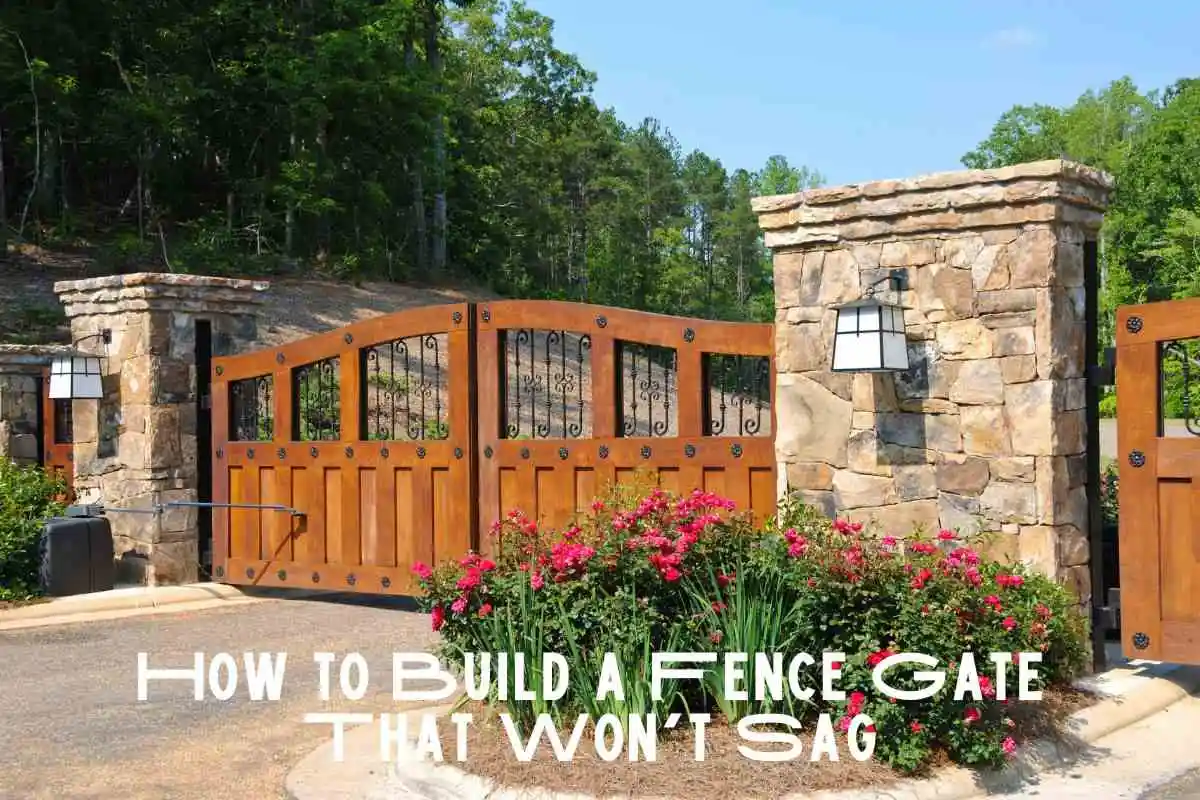Building a fence gate that won’t sag is crucial for maintaining both the functionality and appearance of your outdoor space. A sagging gate is not only an eyesore but can also become difficult to open and close over time. In this guide, we’ll explore how to build a durable, sag-resistant fence gate that will stand the test of time. Whether you’re a seasoned DIY enthusiast or a beginner, following these steps will help you achieve a sturdy and reliable gate.
Step 1: Choose the Right Materials
The first step in building a gate that won’t sag is choosing the right materials. Treated lumber is your best bet because it’s resistant to rot and insects, which is essential for outdoor projects. According to a Landscaping Contractor, “Choose high-quality materials, such as treated lumber, for the gate frame to ensure durability.” This advice is key, as using inferior materials can lead to a weak gate that sags under its weight.
Personal Insight:
I learned this lesson the hard way when I used standard, untreated wood for my first gate. Within a year, it started to show signs of sagging, and I had to replace it. Since then, I’ve always opted for treated lumber, and my gates have held up much better.
Step 2: Properly Frame the Gate
Framing your gate correctly is essential to prevent sagging. Start by ensuring that your frame is square and level. A Home Improvement Expert advises, “A well-framed and sturdy gate is essential for preventing sagging. Ensure the frame is square and level before installing the gate.” You can do this by measuring the diagonals of your gate frame; they should be equal. If they’re not, adjust the frame until they are.
Reinforce the corners of the frame with metal brackets to add extra stability. These brackets help keep the frame square, especially under the stress of opening and closing.
Step 3: Use the Right Hardware
The hardware you choose plays a significant role in preventing gate sagging. Heavy-duty hinges are a must. According to a DIY Enthusiast, “Properly reinforce the gate hinges and hardware to prevent sagging over time.” Opt for adjustable gate hinges that allow you to tweak the alignment if the gate starts to sag slightly over time.
Make sure to use long screws that penetrate deep into the gate frame and post. Short screws are more likely to loosen over time, causing the gate to sag. For added stability, use galvanized or stainless steel screws to prevent rust, which can weaken the hinges and screws over time.
Personal Insight:
When I built a gate for my backyard, I initially used standard hinges. Within a few months, the gate started to sag. After upgrading to heavy-duty hinges and using longer screws, the gate remained sturdy and aligned, even after years of use.
Step 4: Install a Diagonal Brace
One of the most effective ways to prevent a gate from sagging is to install a diagonal brace. This brace should run from the bottom corner of the hinge side to the top corner of the latch side. This design helps distribute the weight of the gate and prevents it from drooping.
A Fence Installation Specialist says, “A professional fence installer can ensure that your gate is built to last and resist sagging.” Even if you’re doing it yourself, following professional advice and installing a diagonal brace can significantly increase the lifespan of your gate.
Step 5: Attach the Gate to the Fence Posts
Attaching the gate to sturdy, well-anchored posts is critical. Your fence posts should be set in concrete to prevent them from shifting or leaning over time. When installing the gate, make sure the hinges are securely fastened to both the gate and the post.
According to a Building Materials Supplier, “Consult with a knowledgeable staff member at your local hardware store for advice on selecting the right materials and tools.” This is especially true when choosing hardware that will be exposed to the elements. Stainless steel or other rust-resistant materials are recommended for outdoor use.
Step 6: Regular Maintenance
Even the best-built gate needs regular maintenance to prevent sagging. Periodically check the hinges, screws, and other hardware to ensure they are tight and in good condition. If you notice any loosening, tighten the screws immediately.
A Homeowner advises, “Regularly inspect and tighten any loose screws or bolts to maintain the structural integrity of your gate.” This simple habit can prevent minor issues from becoming major problems.
Personal Insight:
I make it a point to inspect my gate every few months. A quick check and occasional tightening of screws have kept my gate functioning smoothly for years.
Additional Tips for a Sag-Free Gate
- Use Double Gates for Wider Openings: If your gate opening is wider than 4 feet, consider using double gates instead of a single wide gate. This reduces the weight on each hinge, making it less likely to sag.
- Install a Gate Wheel: For heavier gates, a gate wheel at the latch end can help support the weight and prevent sagging. This is especially useful for larger gates or gates made from heavier materials like metal.
- Consider a Metal Frame: If you’re building a particularly large or heavy gate, consider using a metal frame instead of wood. Metal is less prone to warping and can provide additional support to prevent sagging.
Resources and Further Reading
For more detailed instructions and visual aids, consult the following resources:
- Home Improvement Websites: Websites like This Old House, Bob Vila, and The Spruce offer detailed tutorials and step-by-step instructions for building a fence gate.
- Building Material Suppliers: Stores like Home Depot and Lowe’s can provide information on materials and tools needed for gate construction.
- Local Building Codes: It’s essential to consult local building codes and regulations to ensure your gate complies with zoning requirements. This can prevent future issues with your gate’s placement or construction.
- Fence Installation Companies: If you’re not confident in your DIY skills, consider hiring a professional to build your gate. Professionals have the experience and tools to ensure a sturdy, sag-free gate.
Conclusion
Building a fence gate that won’t sag is all about careful planning, using the right materials, and proper installation. By following these steps, you can create a durable and functional gate that enhances the look of your property and stands the test of time. Regular maintenance will also ensure that your gate remains in good condition for years to come.
Whether you’re tackling this project as a weekend DIY endeavor or seeking the help of professionals, the key to success is attention to detail and a commitment to quality. A well-built gate not only adds value to your home but also provides the security and privacy you need.
So roll up your sleeves, gather your tools, and get ready to build a fence gate that will serve you well for years without sagging!









